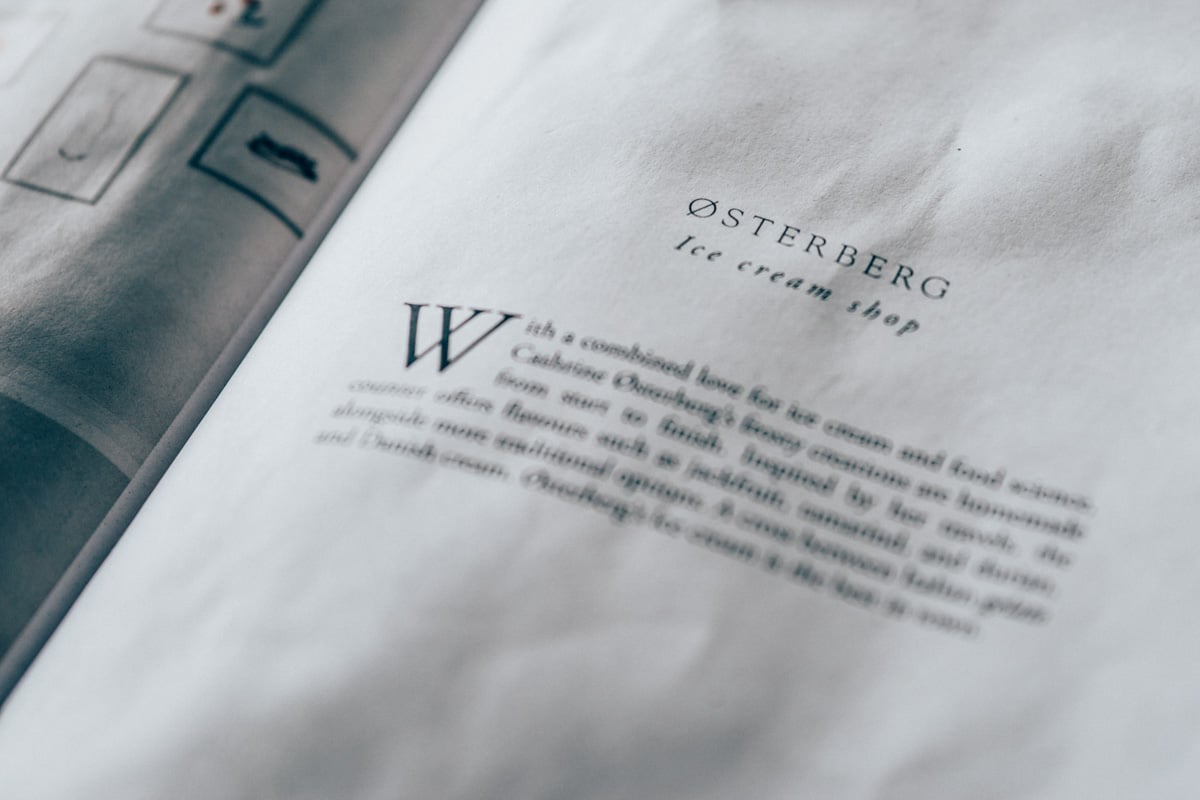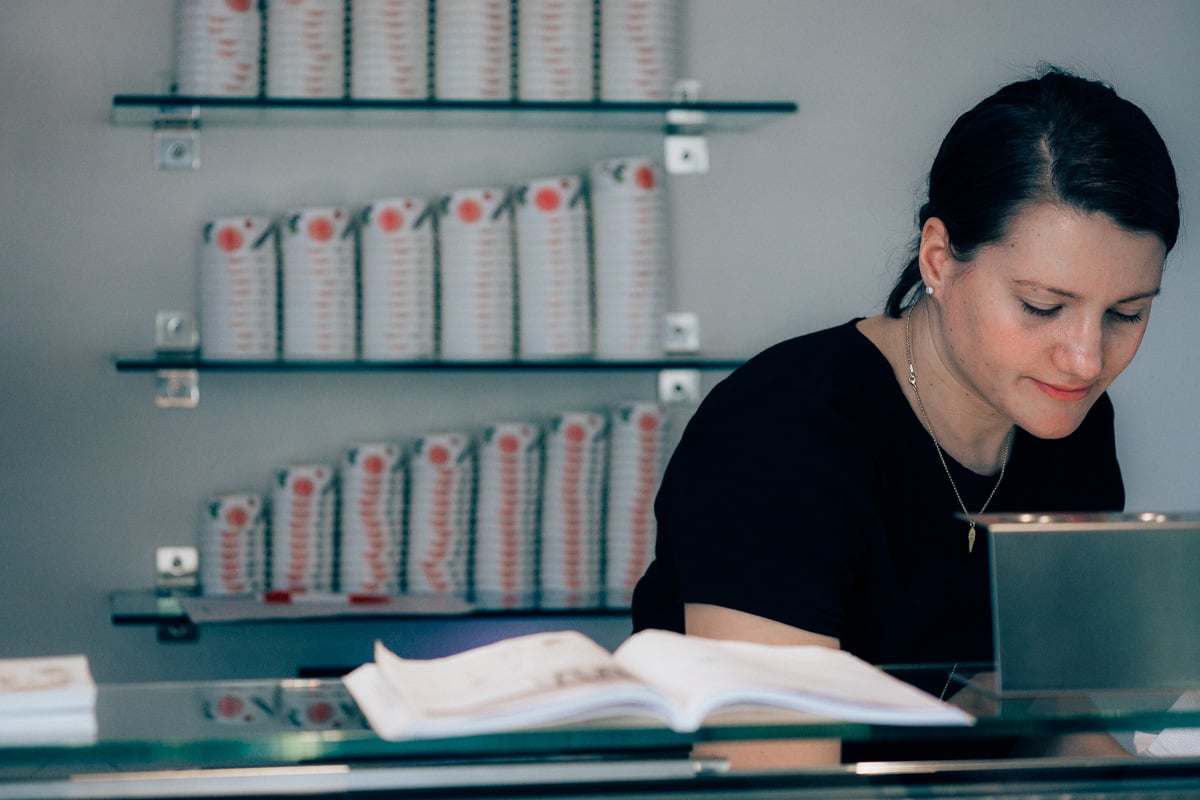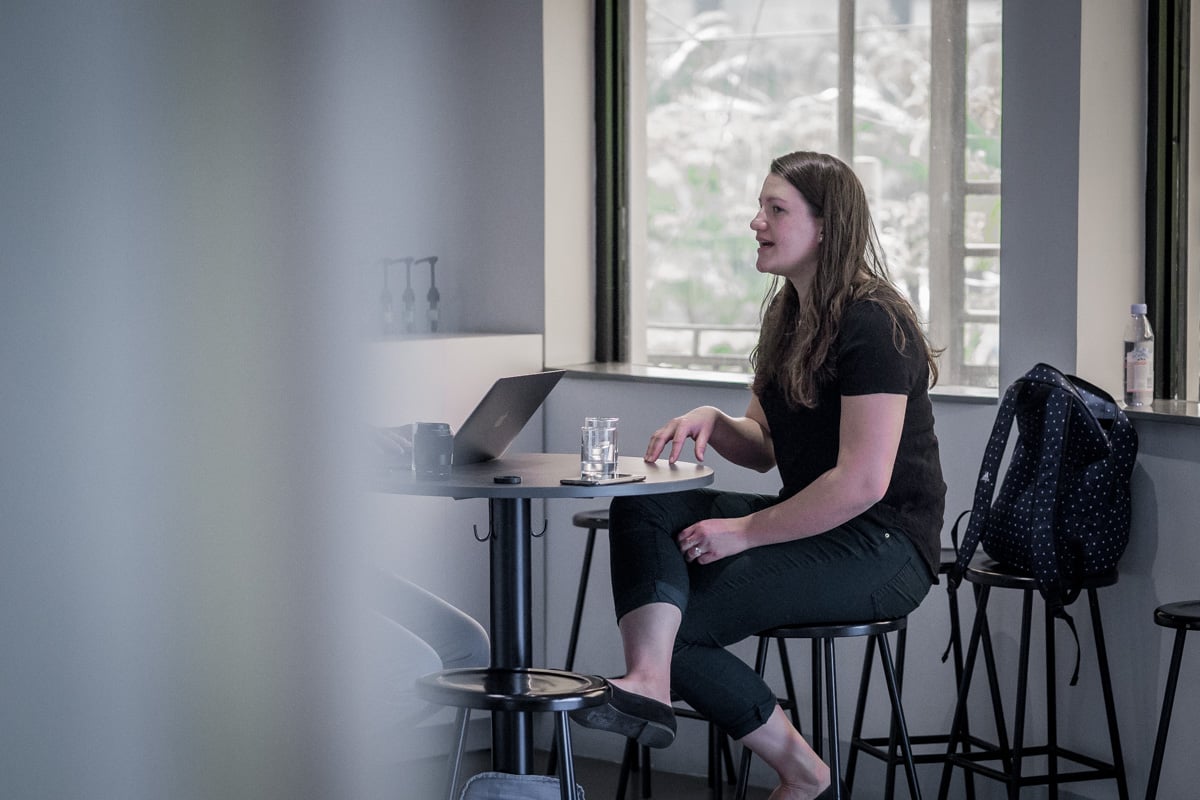Our team has lived in Vietnam for a combined 25 years+, yet ice cream continues to be a food offering that we find to be lacking in Ho Chi Minh City. When we came across Østerberg Ice Cream, we decided to reach out to the founder Cathrine Østerberg, a Danish lady who has lived in Vietnam for sometime to understand why she’s set up business here in Vietnam.
We quickly learned that she had already established a thriving ice cream business in Denmark. The brand is recognized as a local favorite in Copenhagen and is frequently referred in guidebooks and among the Michelin-star restaurants to their customers. With her family having an established fruit business in Vietnam too, she decided to bring it to Vietnam given the lack of artisanal ice cream options.

How did Østerberg Ice Cream get started?
I’ve always been interested in ice cream, and at the moment the Vietnamese ice cream market is a bit artificial and defined only by big names. There’s no homemade style here. We opened our first shop in Denmark almost three years ago. The concept is more or less the same. Since our family’s business has always been in the fruit import and export trade, our shops in Denmark and Vietnam have been able to offer both Danish and Vietnamese fruits. In Denmark, we’re able to offer fruits such as jackfruit and tamarind. On the other hand, we’re able to offer Nordic flavors such as elderflower, rhubarb, and licorice in Vietnam. We’re also looking at expanding the business to the Middle East, where our family’s business also trades fruits. Our Copenhagen location is only open from April to October, due to the winter weather that closes our ice cream shop. During the European winter, I partly live in Vietnam hence why I’ve been able to open the business in both countries.

What did you do before starting Østerberg Ice Cream?
I was studying, pursuing a bachelors in food science and a masters in gastronomy and health. I wrote my final master thesis in Canada with an ice cream professor, one of the best. I learned a lot about the structure of ice cream and the rest of the product as much as possible.
Understanding the whole science is fun and challenging. It’s all about finding the balance of fats, sugars, proteins. It can be icy, sandy, or melt too fast. Too rich or too thin. Lots of things can go wrong. Having the knowledge of the science has helped me make new flavors and develop calculated recipes. We also host a lot of ice cream lectures and workshops to educate consumers about the product.

What’s Østerberg’s best seller?
The best seller is chocolate. Always. It’s the best seller in Denmark too. Mainly because we always have chocolate in our display case. The rest of the flavors vary.

What’s the market opportunity for ice cream in Vietnam?
There are some places serving liquid nitrogen popping up around. Mostly found in the backpacker and Pasteur Street areas. Here and there. The structure though doesn’t do it for me, it feels like taking a shortcut. It’s still a nice product, though not the way I approach ice cream making. I’ve also seen more small artisanal Italian gelato shops. With that said though gelato and ice cream have huge differences. Ice cream has higher fat content, which makes it creamy and rich. Gelato is 4-5% fat while ice cream is usually around 10%. The standard for ice cream fat percentage in North America is 10%, while Denmark is 5%. Here in Vietnam? It’s open ended, though usually falls around 8-14%. It’s not as rich, but not as thin as gelato. We’re missing a product in the middle. If it’s too rich, you can get full really quick. If it’s too thin, you don’t feel satiated. Our ice cream is trying to fill the gap in the middle.

Can you tell us one short, memorable story about doing business in Vietnam?
What surprised me the most are the food safety issues. In Denmark, we have strict rules. At least I thought so. In Vietnam, the main concern is paperwork more so than the food safety. Food can kill people if you don’t pasteurize, freeze, or clean ingredients and equipment properly. And yet, we sometimes find ourselves more concerned with having signatures on paperwork to operate the business. Vietnam is making efforts to improve food safety, but the approach to solve it is different.

What are some interesting things about Østerberg that people don’t know about?
- We’ve developed more than 150 ice cream recipes. It took two years for us to figure out our basic recipes. The new flavors are always under development
- We don’t offer whipped creams, other toppings, or fancy options besides our homemade waffles. Ice cream is such a nice thing and I want people to appreciate the ice cream. No random topics that distract from the flavor and texture of the ice cream. We prefer to keep it simple.
- We’re lucky to be able to offer all of the exotic flavors, it’s hard to find anywhere else. We’re also fortunate to offer all fresh, natural ingredients. For instance, the milk and cream are from Denmark, where we place high value on our globally-recognized dairy traditions. With our family’s import/export business also stocking the products, it’s easier for our business to exchange and keep up-to-date supply
- We only have 12 flavors at a given time. To put it in perspective, Baskin Robbins has 31. Others may have even more.

What are the differences between your menu offerings in Copenhagen and here in Ho Chi Minh City?
I thought it would be different, though the long-term tastes are quite similar. And the recipes are exactly the same. The general trends I’ve observed are that the Vietnamese perceive our ice cream as a bit more sweet. I thought Vietnamese liked sweeter foods, so we had to reevaluate our recipes, adjusting the sweetness level while adding more texture.
Across our locations in Copenhagen and Vietnam, we’ve also experimented with the adaptation of novel flavors. For example, we have an ice cream that uses black currant. It’s intense and rich in Vitamin C. It carries an acidic flavor and people in Denmark love it. I’ve tried to make it here, though my staff has told me that most of our Vietnamese customers cannot eat it because it’s too sour. It does seem, however, that more and more Vietnamese are getting to like it. It has this edge, sharpness, and intensity to it.
We’ve also carried durian flavor in Denmark. People say no way why do you have that on the menu. At the same time, it’s a delicacy in Vietnam and we’ve sold a decent chunk of it here. We’re also just now starting with to-go boxes. We’ve always offered to-go in Denmark, though we’re gradually incorporating it here. If we started with everything on the menu in Vietnam, it would most likely overwhelm customers with choice and too many new items. We want to curate the menu, while educating our market about the the artisanal scale and homemade story first.
What’s missing in the food and beverage scene in Ho Chi Minh City?
Finding a decent place to drink alcohol is not a problem here. What I’m missing are restaurants that serve healthy yet convenient food. Fast casual is a good way to categorize it, it’s different from fast food. In Denmark, if I wanted a healthy snack, I can go to every small kiosk in the city to find small salads, nuts, bars. Something healthy.
In Ho Chi Minh City, you’ll have no problem finding white bread and white rice here. Though we desperately need something more healthy. Whole grain, fibers, vitamins and minerals. I lose energy quickly if I don’t get the nutrients I need to maintain my energy. Also, curation is better! Less but good choice is better than offering everything.

Who should we speak with next?
There’s one gentleman, a French man named Demailly Vincent who recently opened a popular coffee station on a bike in Thao Dien District 2. It’s good coffee. He’s a chatty person, welcoming. I’m always wondering what his full story is, VietNamNet News covered him a while back.
There’s another gentlemen, Paul Rulkens from Holland. He has worked with my father’s company for a while, and he has helped us find our location. He seems to have a huge network, especially within the expat scene.
